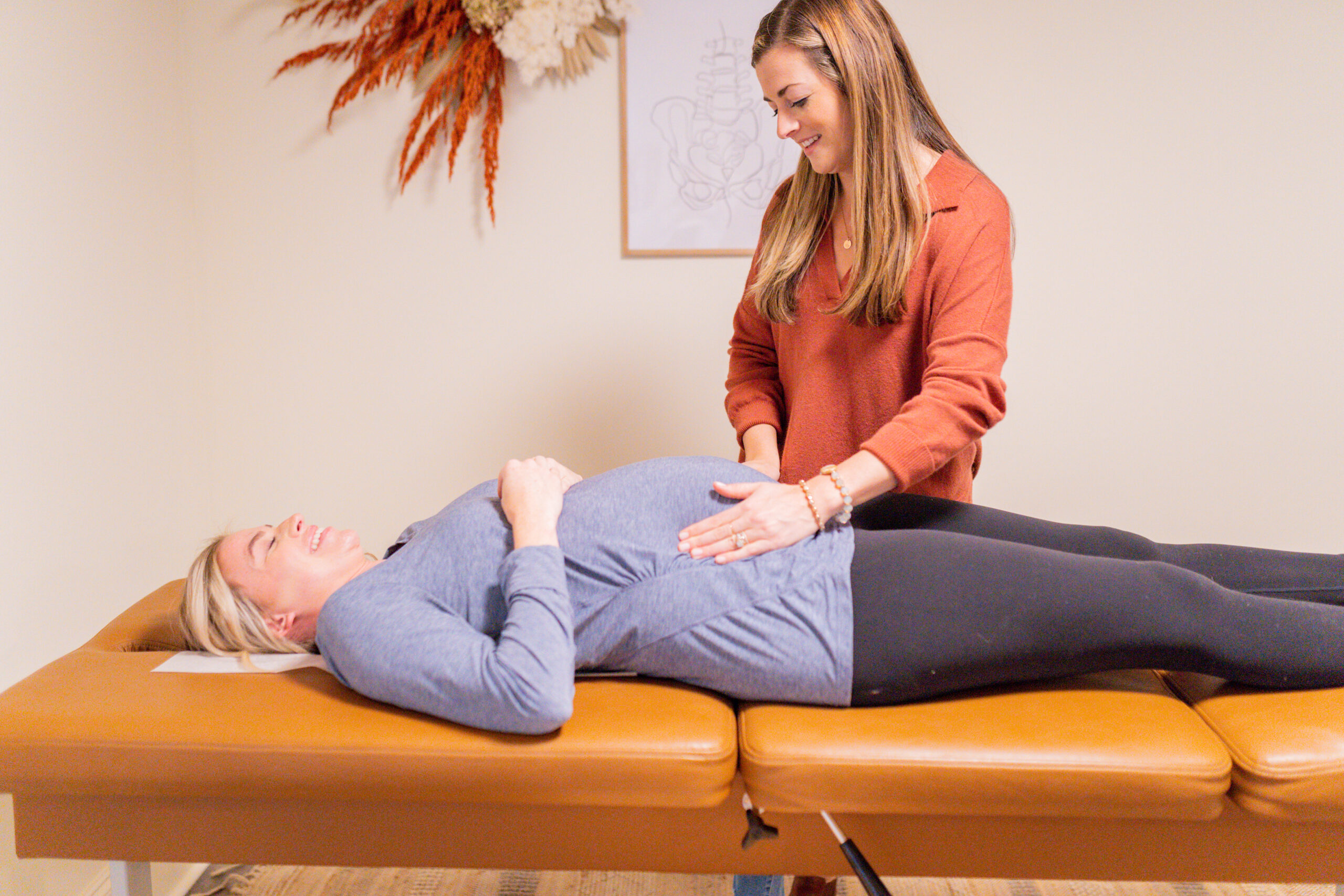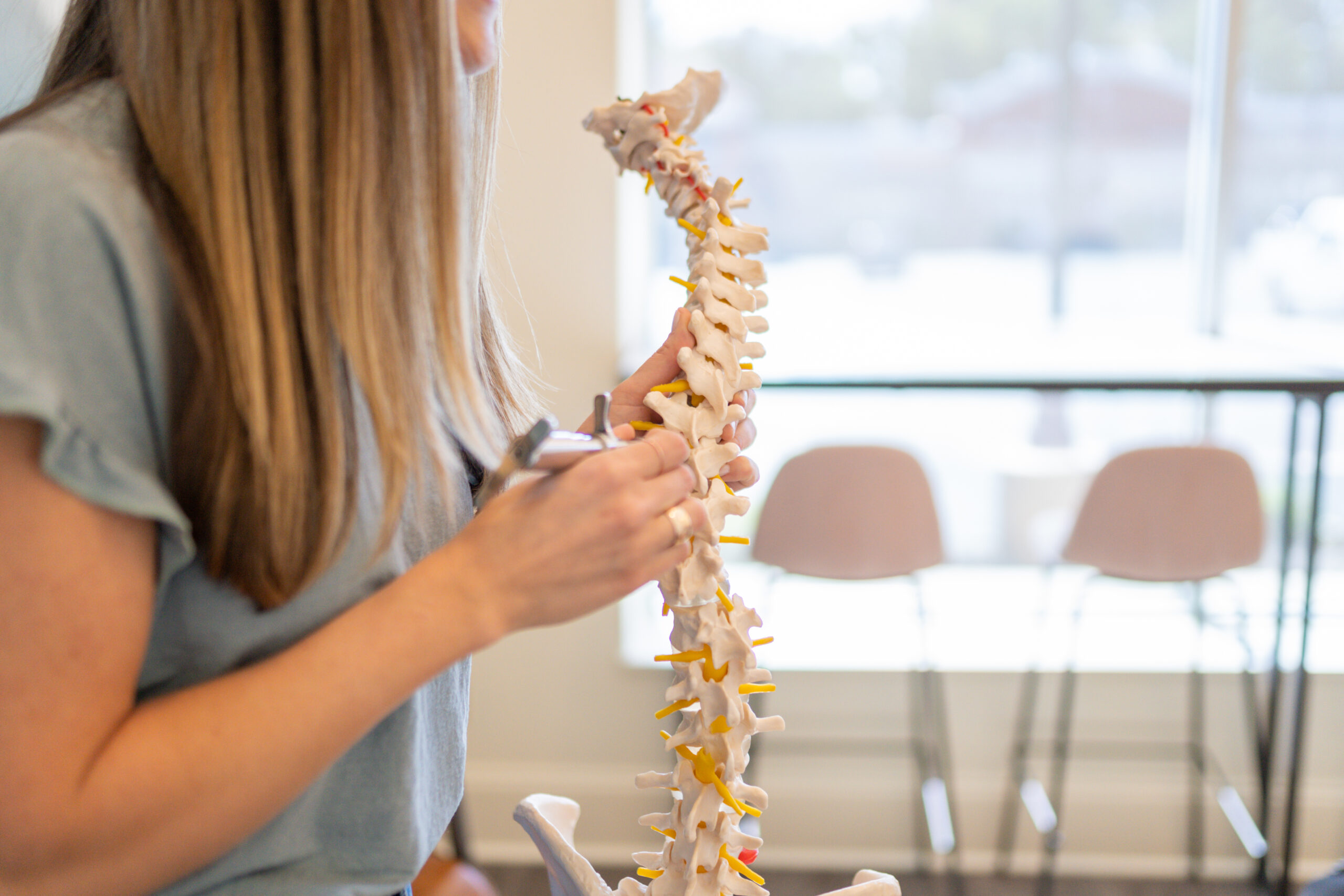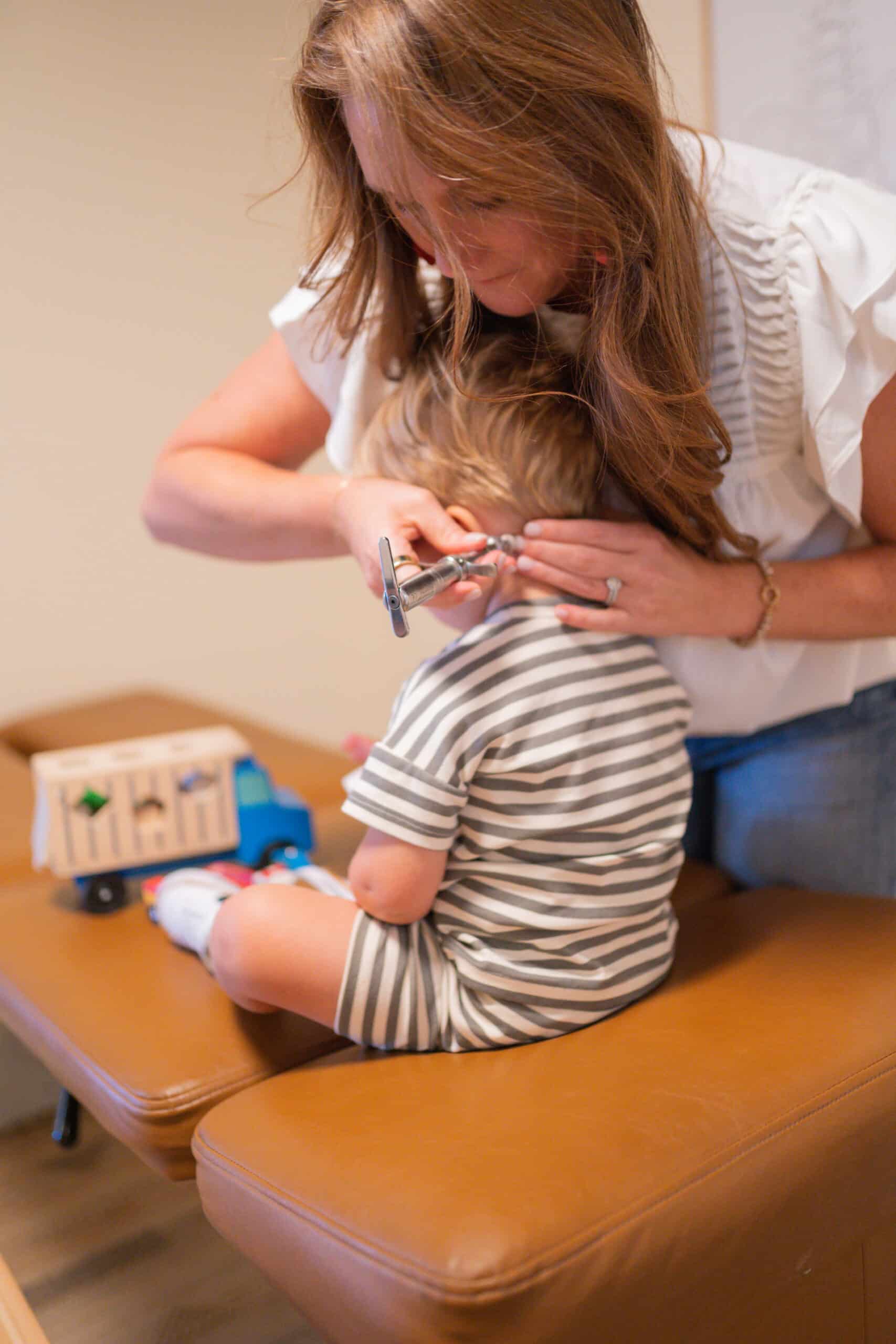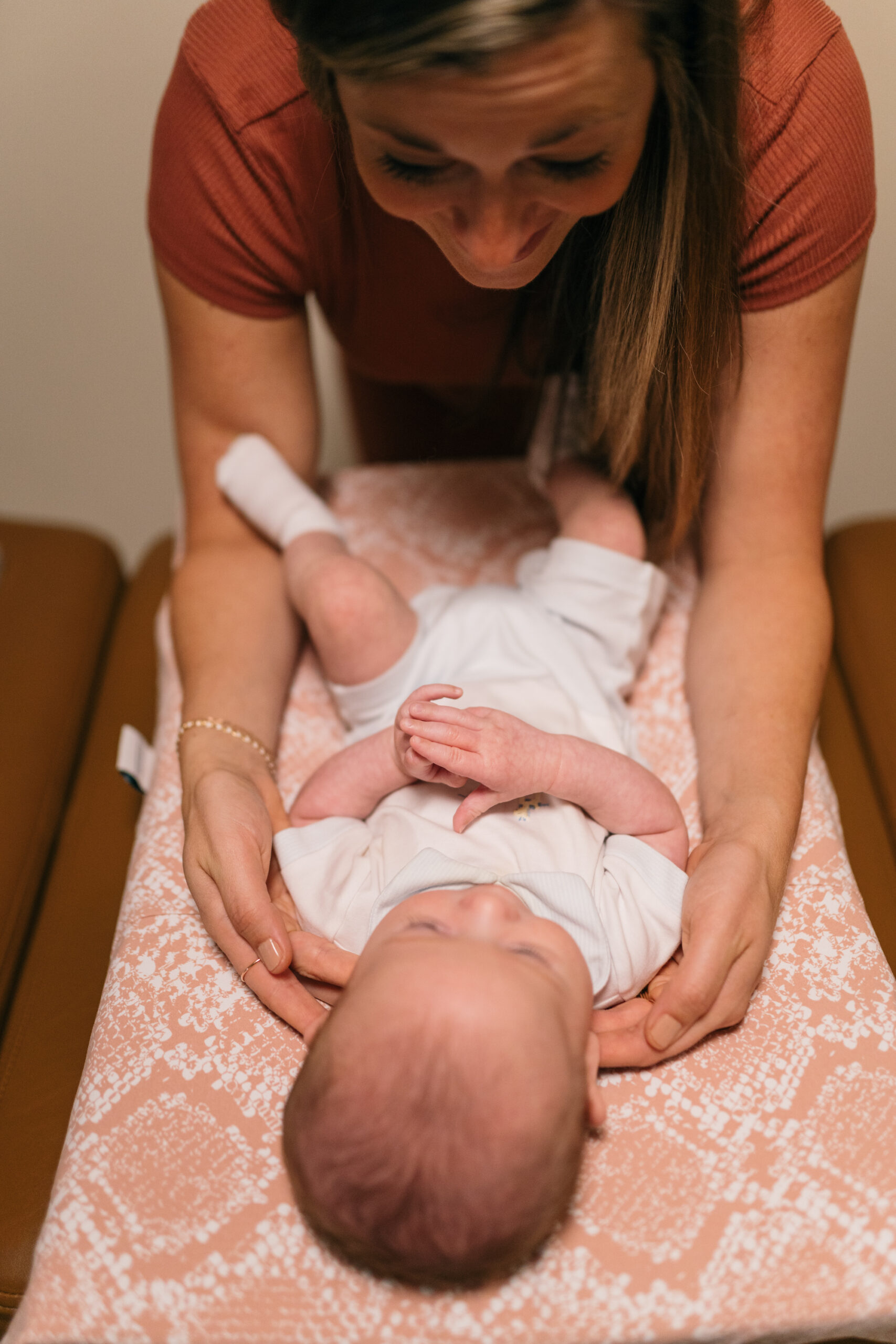The Key to Supporting Gross Motor Delays and Developmental Milestones

We understand that there’s a lot to keep track of when it comes to taking care of our little ones. From the numerous items in the diaper bag to everything they need day to day, it can be extremely overwhelming. Then there is a whole other chart that isn’t in that diaper bag we need to be aware of as parents, and it’s called the Developmental Milestones Chart. These are things that your pediatrician or family doctor will check in with you on during your well-baby checks.
Often, motor development and developmental milestones are overlooked, dismissed, or missed altogether by pediatricians and standard doctors. So, in this blog, we are going to discuss gross motor development, referring to your baby’s larger muscles, which includes tummy time, rolling over, sitting up, crawling, and walking. These are important movements that contribute to your child’s overall health and well-being.
As a parent, it can be challenging to navigate these issues without proper knowledge or expertise in neurodevelopment. That’s why I’m here to provide you with the answers and explanations you need because, as a pediatric chiropractor, neurodevelopment is my expertise.
If you’re concerned about your child’s motor milestones and aren’t receiving the answers you need from your pediatrician, this is for you. When neurologically-focused chiropractic is combined with movement-based therapies, like PT and OT, which we co-collaborate and co-manage with all the time, it can yield excellent results.
The Connection Between Gross Motor Development and the Nervous System
So what is that missing link?
The key to understanding motor development lies in the nervous system. The muscles of your child’s body in the developing muscular motor movement system are under complete and total control of the nervous system.
The central nervous system is the absolute boss and controller of the muscular system.
When we look at motor delays or structural deformations, such as plagiocephaly and torticollis, we find that these gross motor and structural challenges have a neurological foundation. Stress can affect the central nervous system, causing it to be stressed out and wound up. The nervous system has two sides to it, the sympathetic fight or flight tension side and the parasympathetic calm and relaxation side. When the sympathetic nervous system is firing and overactive, as we find in many of our gross motor and neurodevelopmental cases, the muscles become too tight and too wound up.
You may be thinking, “That’s not my child’s problem. My child has low tone.” However, hypotonicity or low tone cannot exist in the core or limbs without first having excessive hyper-high tone in the neuro spinal and brain stem areas. The central nervous system comprises the brain, spinal cord, and motor and sensory nerves that control every tissue and cell of the body, especially the muscles. If the central nervous system is injured during birth trauma, from a fall or childhood physical trauma, it can cause misalignment, fixation, and tension, also known as subluxation.
Subluxation can take the central nervous system and wind up the fight-or-flight sympathetic nervous system, especially in the neck, traps, and shoulders. If your child has low tone or coordination challenges, we need to assess their brainstem, neck, and spine to identify any subluxations that may be present.
Sequential Order of Gross Motor Development
It’s important to address gross motor delays, as gross motor development needs to occur in a complete, organized, and timely fashion to kick on fine motor and advanced neurodevelopment. Think of it like project management, where the gross motor system, which includes the big muscles of the neck, spine, trunk, core, and limbs, needs to develop first. And it’s not just the big muscles on the outside but also the muscles on the inside that need to be functioning properly.
This neuro-gross motor system needs to be fully functional before the brain can focus on speech, socialization, and behavioral and emotional regulation.
As I mentioned, birth trauma, such as a stressful pregnancy or an intervention during delivery, can lead to subluxation, which can cause tension and tightness in your child’s neck, traps, shoulders, and spine right from the start. This can result in weak core and limb muscles, making it difficult for your child to develop their gross motor skills, which can then lead to developmental issues later on.
If your child exhibits signs such as being colicky, fussy, having torticollis or plagiocephaly, acid reflux, chronic ear infections, or difficulty sleeping, these may all be indications of subluxation in the central nervous system. Until this subluxation is found, fixed, and adjusted, your child may continue to experience challenges with gross motor development, which can hinder their overall development. Because everything not only has to ‘go on time’ as the charts say but more importantly, it’s supposed to go in the right order and sequence. Understanding this crucial piece of information can be the key to unlocking your child’s full potential.
Motor development and overall developmental milestones are crucial for the health and function of the brain later in life. If subluxation is the hidden challenge hindering your child’s development, it is crucial to take action and address it sooner than later. We want to help you take the necessary steps to ensure your child reaches their full potential!
©Freedom Chiropractic | Terms and Conditions | Privacy Policy | Copy & Website by Liberty Type
©Freedom Chiropractic | Terms | Privacy
Copy & Website by Liberty Type






